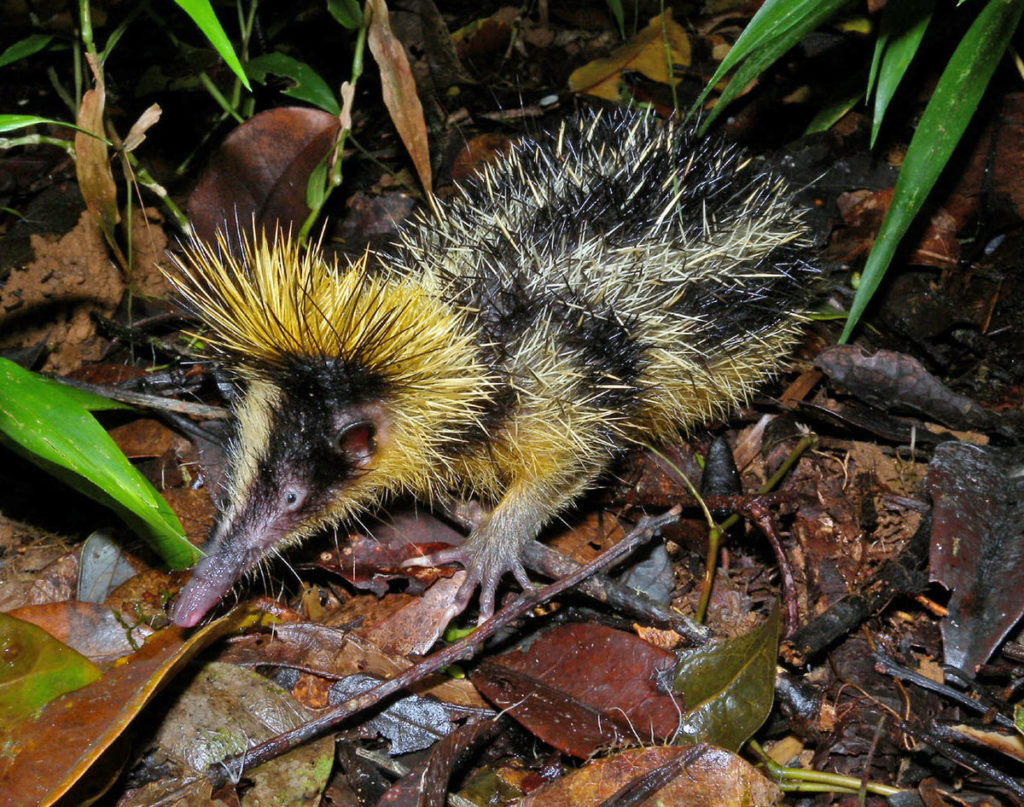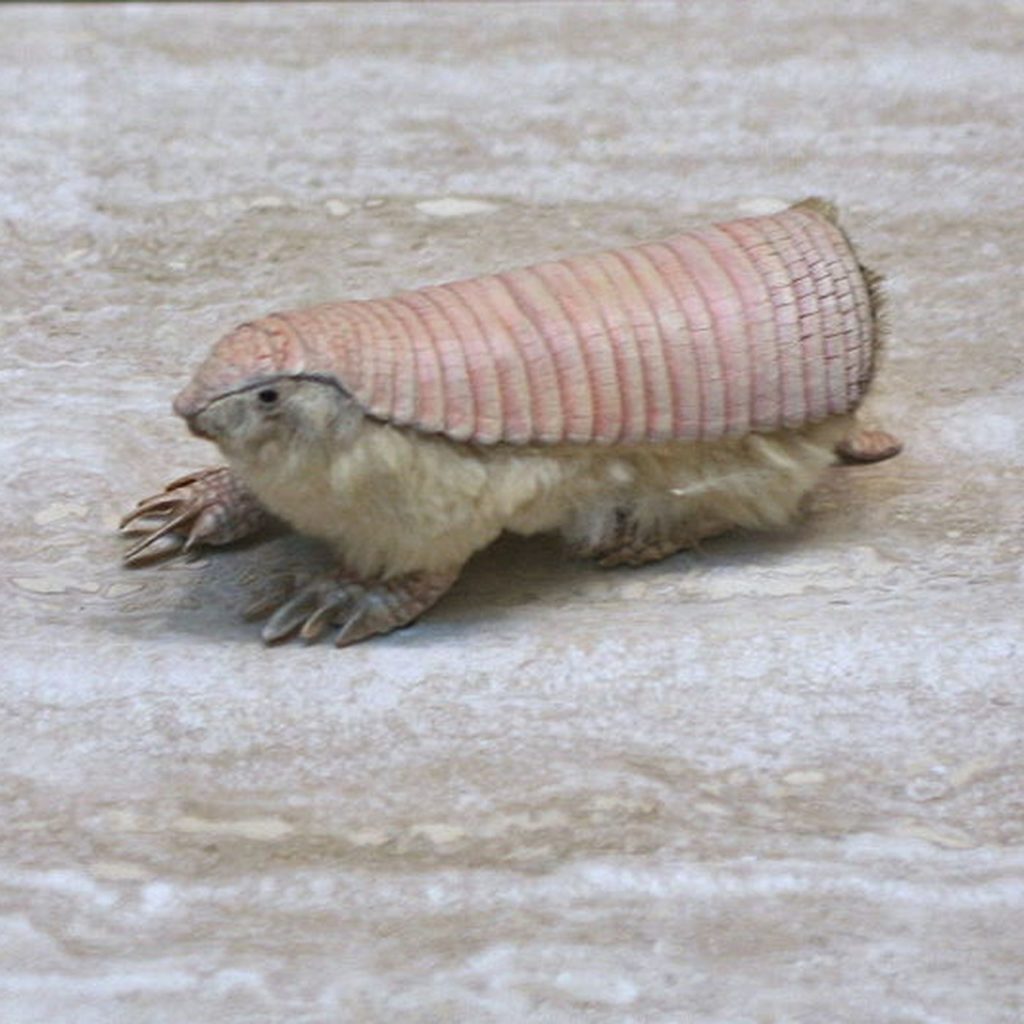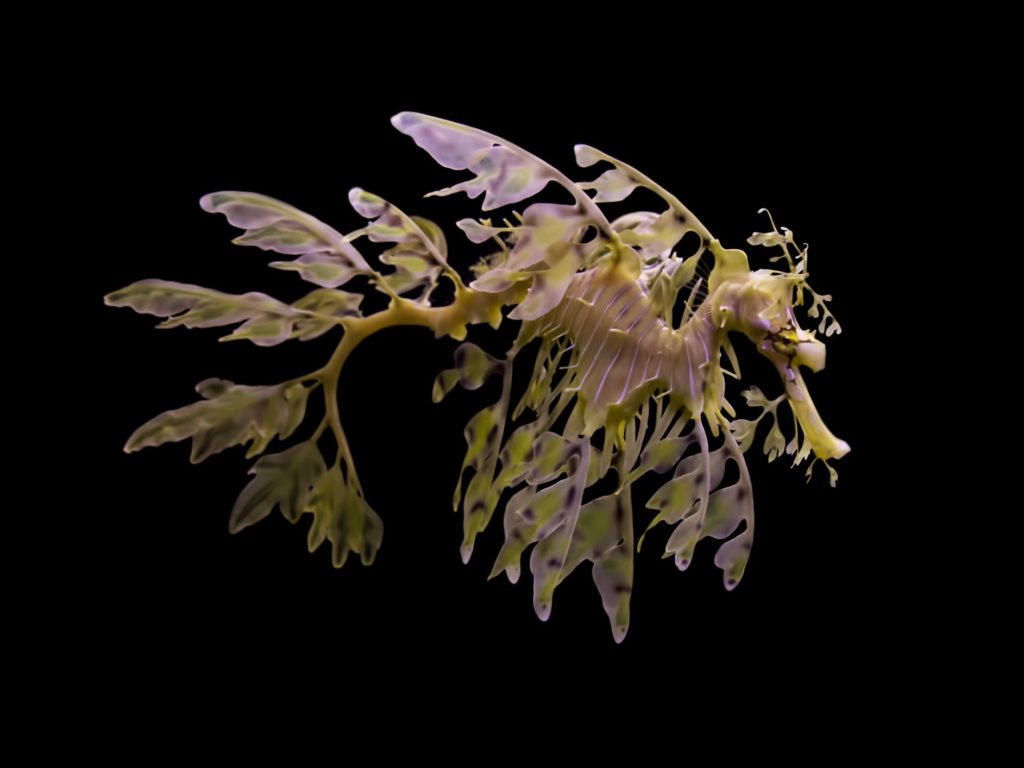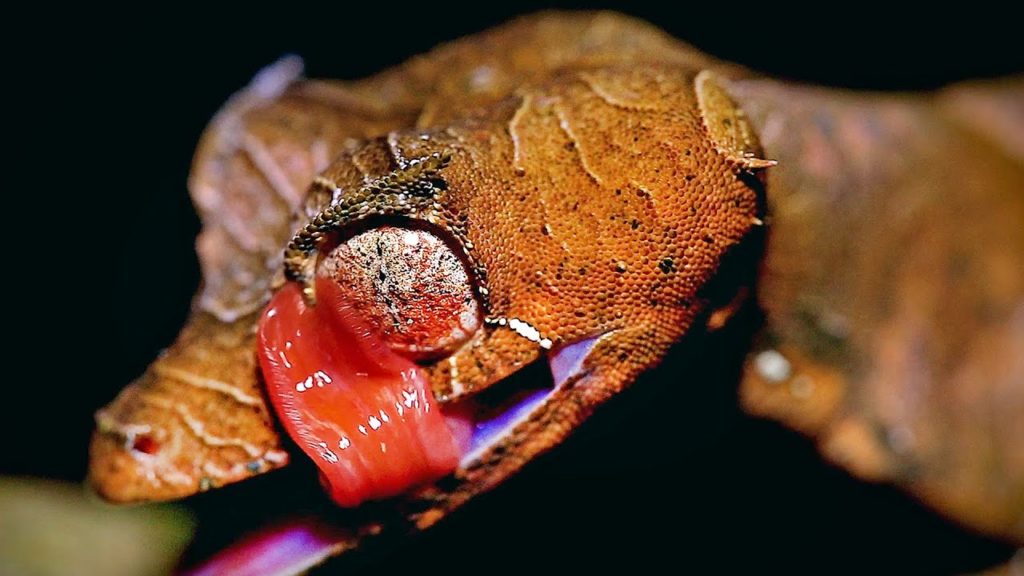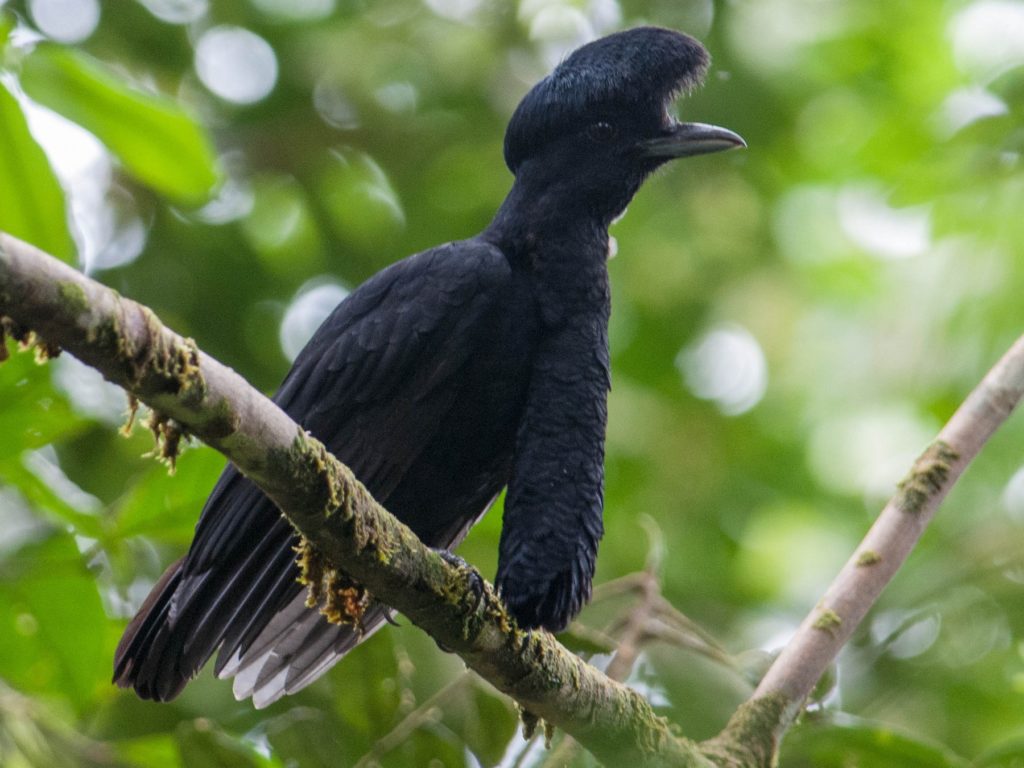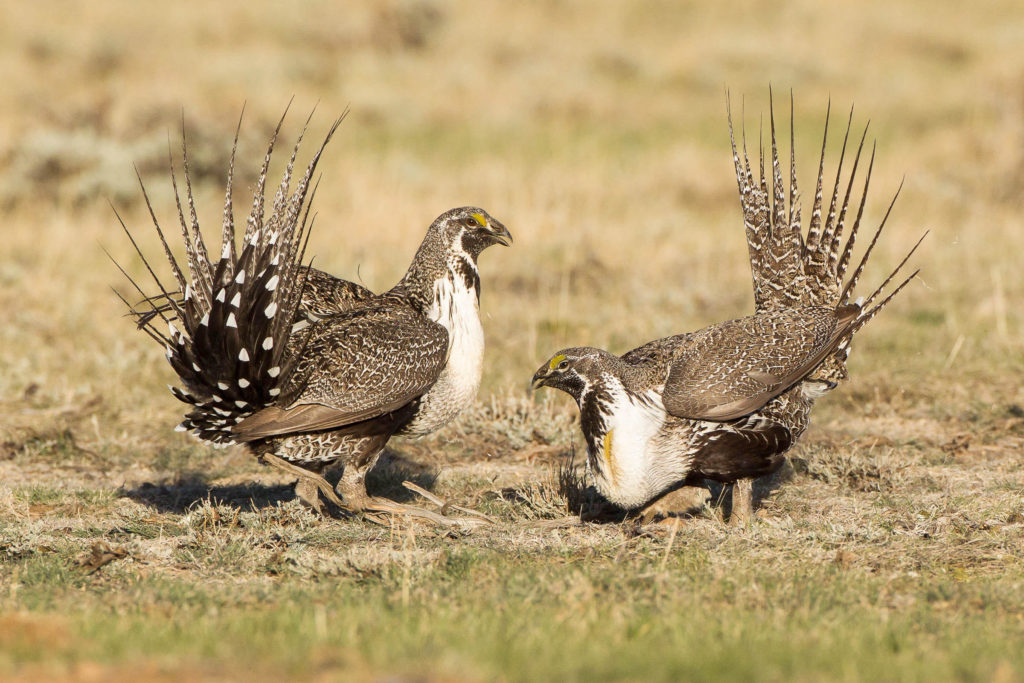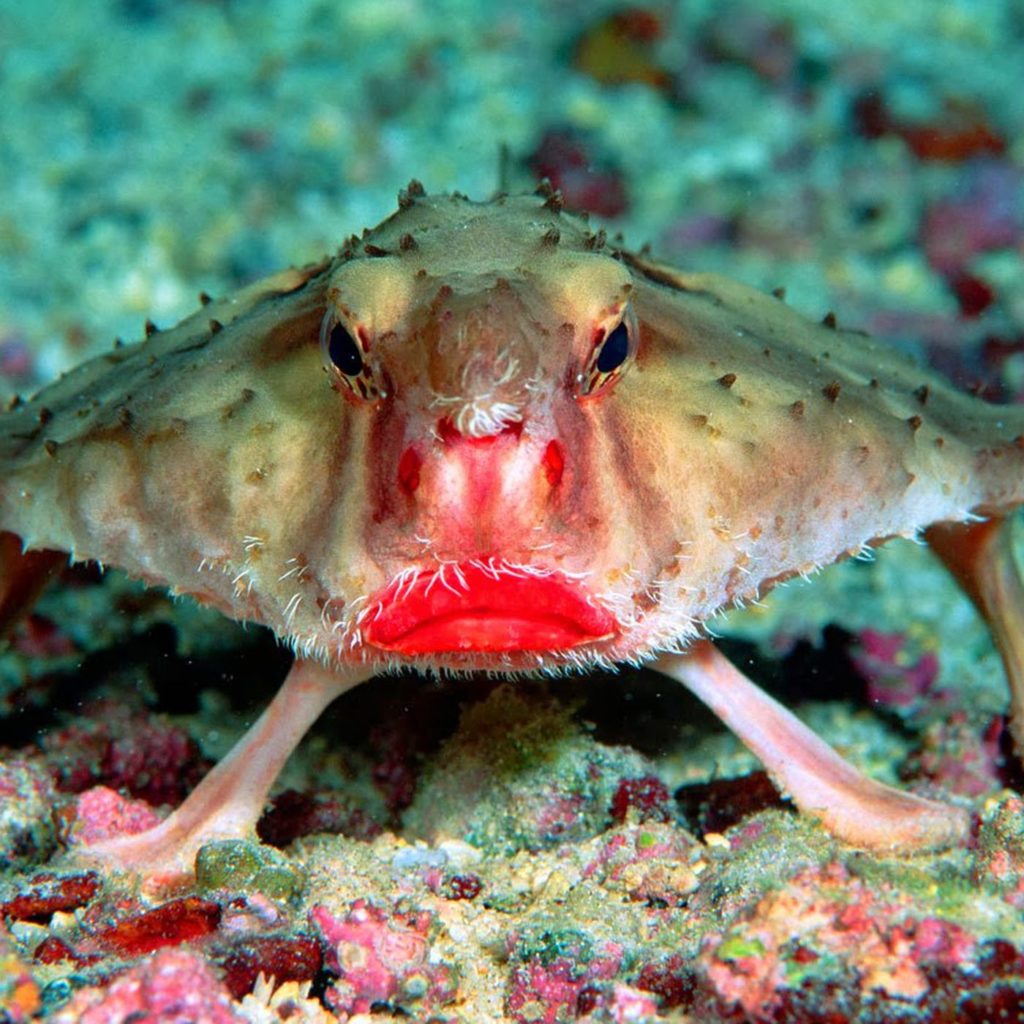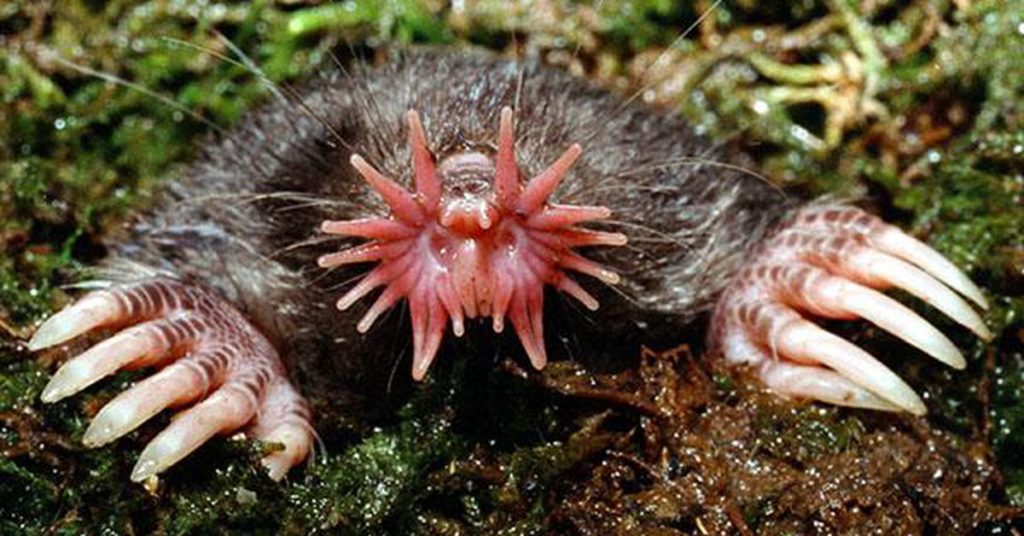Intro
We are here on the Blind Side, The animal kingdom is full of weird and wonderful creatures that either look like nothing you have ever seen before, or are just downright odd! But have you ever seen one that seems so unusual it’s hard to believe it’s real? From a leaf-like lizard to a bumble bee-colored critter, here are 15 strange animals that are hard to believe are real.
15. Saiga Antelope
To describe the Saiga Antelope, you would think it’s a made-up animal from a children’s fairytale. From its big and bulbous nose and wool-like hair and fringe to its amber-colored horns and goat sizing, it’s not the most uniform of creatures. But it’s real, and used to be a common sight across Europe and Asia.
In the 19th century, this absurd-looking animal would roam the land, especially around Russia, Uzbekistan, Mongolia, and Kazakhstan. Their fast maturity meant they could breed fast, and the frequency of twins meant they could sustain hunting by those looking for their beautiful horns and something for dinner.
However, when the Soviet Union fell in the 1990s, poverty and unemployment led to more hunting to make up for the shortfall in food. The Saiga antelope population suffered as a result. There are now thought to be around 50,000 of this unique animal in existence, with them living in herds of about 1,000.
Time for the Star Topic!
It’s time for the star topic! At a public crocodile viewing area in the United States, a tourist stumbled across what is definitely no ordinary croc. Most people know that both alligators and crocodiles are either green, olive, brown, or a mixture of all three. You might even find the odd albino croc or two. But this one? It’s none of those things! Is it a hybrid crocodile? Does it have a skin pigment problem? Or has someone painted it to look like a panda?
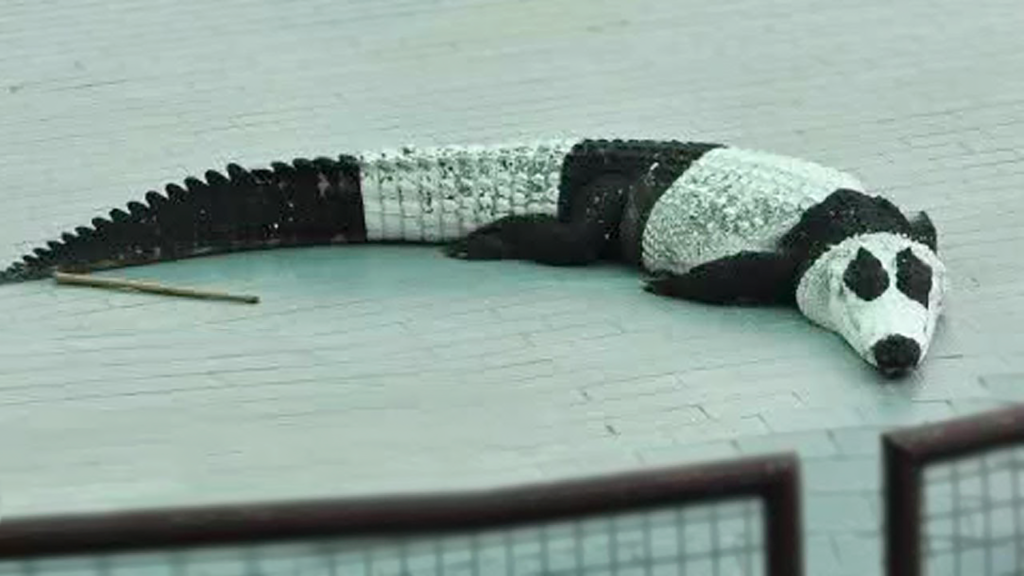
Comment down below with the hashtag #StarTopic, and let us know your opinion in relation to what we just showed on screen. With that said, let’s keep things moving!
14. Earthquake-Predicting Giant Oarfish
Most of us have had an inkling for some time that animals know when an earthquake is about to hit. They can start to act strange, hide under furniture, or generally act out of character. Even though the Giant Oarfish is an unusual animal we don’t know much about, there’s evidence that in its family, there are members who can predict earthquakes.
The slender oarfish, which is related to the Giant Oarfish, is often discovered stranded on beaches after a sizeable earthquake. Such an instance of this was after the 2011 earthquake and Tsunami around the beaches of Tohoku. Around 20 oarfish were found dead on the beach. Fishermen also found dozens after the 2010 earthquake in Chile.
But it’s not just their earthquake-predicting ways that make the oarfish unusual. They are mysterious, and that makes us want to know more. They grow upwards of 13 feet, and the largest giant oarfish ever found was 110 feet. They also live at depths of between 650 to 3,300 feet below sea level.
The giant oarfish is the longest bony fish by far, and they are not the best swimmers as a result. They also feed vertically and can get caught up in currents that take them far from their homes. These long, skinny, and mysterious sea creatures are so unusual that it’s hard to believe they are real.
13. Panda Ant
Most people will agree that insects usually are not cute. In fact, around a quarter of respondents in a survey by Chapman University said they were afraid of them. The panda ant may change your mind, but only for its looks.
Look at it. It’s cute, fluffy, black and white, and looks every bit like a panda you would expect. It even has black and white markings in all the right places. The panda ant is possibly one of the cutest insects around, but it’s a trap. Don’t let its cuteness fool you!
The panda ant is neither panda nor ant; it’s from the wasp family. It also goes by the name of cow killer ant because the female carries a somewhat painful sting when you annoy her! Unlike ants, they also don’t have queens, workers, or drones, and they do not live in colonies.
Everything about this insect is absurd. The male looks nothing like the female panda ant and is normally larger. The male also has wings, but no stinger, while the female has a stinger, but no wings. When the two meet for reproduction, he will carry her while mating, before delivering her into the burrow of another bee or wasp family.
The female will lay her eggs around that bee or wasp family’s larva, which acts as a host. The panda ant larva will then eat the host larva from the inside out. Once they are mature, they eat nectar.
Fortunately, the panda ant is not an insect you will come across often. They live in Chile, in the dry coastal regions, and often hang around the Andes mountains.
12. Peacock Mantis Shrimp
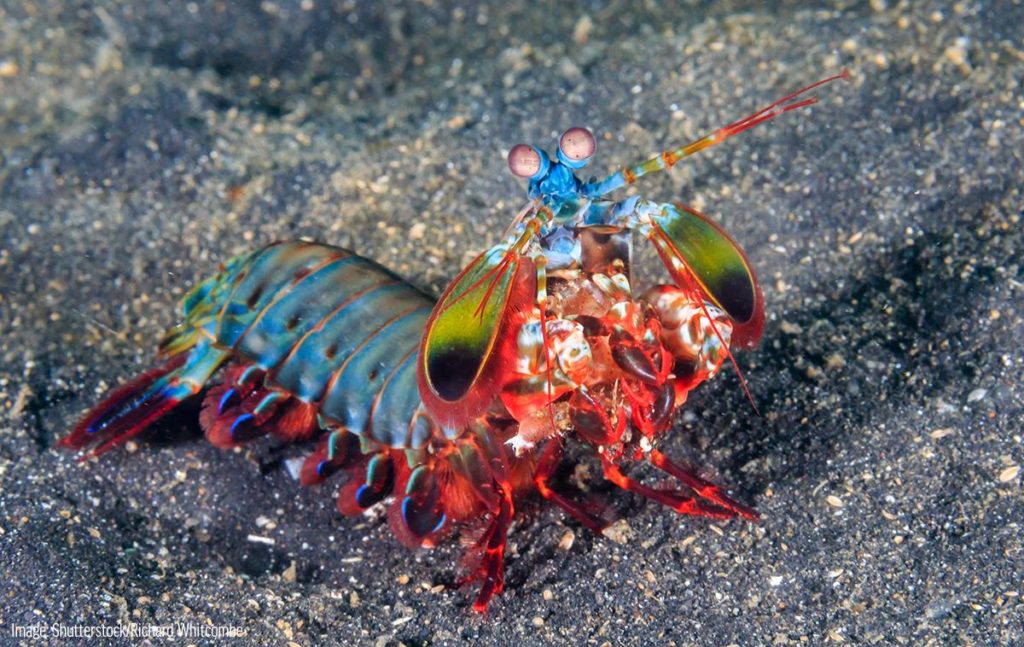
You usually have beauty or brawn in the animal kingdom, but rarely both. The peacock mantis shrimp is proving that having both is undoubtedly an advantage. To look at, the peacock mantis shrimp doesn’t seem real.
It boasts a kaleidoscope of colors from its hard-shelled body, and its forearms are spotty. It looks like a child has been let loose with a fresh packet of crayons and has used every single one of them. But the peacock mantis shrimp is as real as you and me.
It lives in the warmer parts of the Pacific and Indian Oceans and has some of the most complicated eyes out of all living creatures. If you thought your 20/20 vision was pretty good, then think again. This shrimp has 16 color-receptive cones, whereas humans only have three. They also have millions of light-sensitive cells that allow it to see ten times as many colors as us – including UV light.
The shrimp will use its eyesight to its advantage in warding off prey, but its feistiness helps too. Its club-like appendages can throw a punch as fast as a .22 caliber bullet, which is more than enough to break through a crab’s shell. As a result, it has no trouble taking down prey larger than itself. The peacock mantis shrimp may be beautiful to look at, but you still don’t want to get on the wrong side of it!
11. Mexican Walking Fish
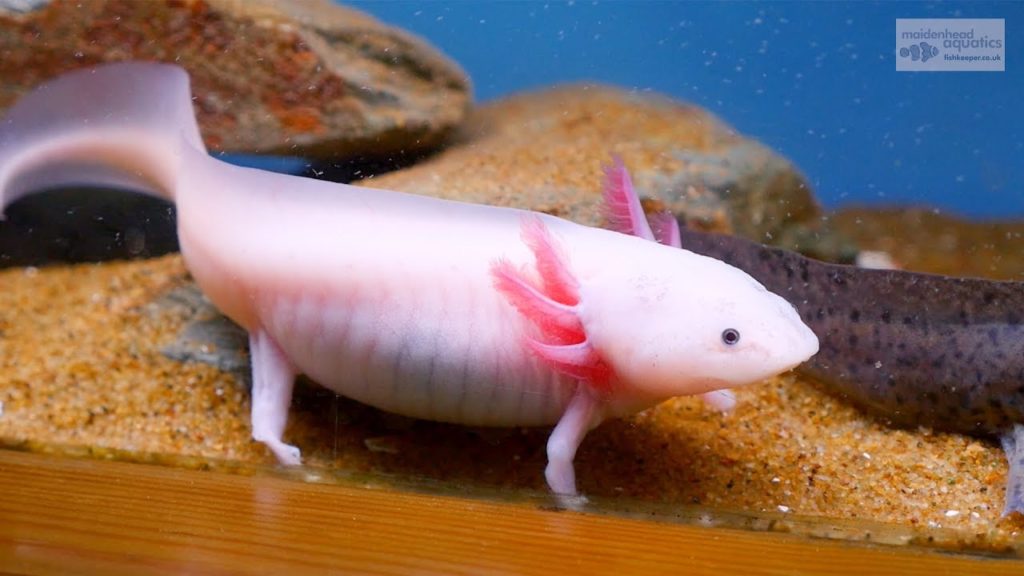
The axolotl, or Mexican Walking Fish, has been the butt of many jokes. Given its prevalence in social media memes, it’s easy for people to think it’s a made-up character. The truth is, it’s a real creature and is both a salamander species and amphibian.
The Mexican Walking Fish lives in the Xochimilco lake complex not far from Mexico City. It lives permanently in water and retains its larval features. Few other creatures like it do, but you will not see an axolotl without its dorsal fin from its tadpole stage, and external gills that look like feathers.
Of course, the most standout feature is the fact it has legs. It looks like a fish, grows to between 6-18 inches, but walks around on the bottom of the lake.
Even though these weird amphibians are a bit quirky and funny, they are quite valuable. They were named after an ancient Aztec god, and scientists are intrigued by them because they can regrow their limbs. It’s easy to think these creatures are made up, but you might be surprised to learn they are not!
10. Aye-Aye
With a magical finger, wide staring eyes, and traits from various animals, you would be forgiven for thinking we’re making this next animal up. The truth is, the Aye-Aye might be really weird, but it exists.
It’s a member of the lemur family and lives in Madagascar’s north-eastern deciduous and tropical rainforests. More often than not, you will find it 700 meters high in the air and in trees.
This scary-eyed critter has sloth-like claws, a weasel-like face, a body not that dissimilar from that of a monkey, and incisors like a rodent. The kicker is they make nests like birds to live in, out of leaves and twigs. It’s like someone took all those animals and patched them together into one.
Such is their strangeness that people in Madagascar think they predict death. They hunt them out of fear and because they believe they wreak havoc on their crops. As a result, they are under protection and are classed as nearly-threatened.
How the Aye-Aye feeds is another one of the reasons why people don’t think they exist. They have a long, thin finger they use for scooping insects and larvae out of trees, and they use this same extended finger to “knock” on trees to find out if any prey is home. They live on seeds, fruit, larva, nectar, and fungi. In captivity, the Aye-Aye will live for around two decades, but their lifespan in the wild is unclear.
9. Yeti Crab
The Kiwa is less often known by its scientific name, and more commonly called by what it looks like: a yeti. The furry lobster, yeti crab, or yeti lobster is a unique decapod that lives around hydrothermal vents and cold seeps at the bottom of the ocean.
It’s white, has no color pigments, and is virtually blind. It also has a hairy and bristly white body that makes it well and truly deserving of its name.
The yeti crab is a carnivore, but you would be surprised at what it prefers to eat. It often relies on bacteria that grow on its furry legs and actively seeks it out as a delicious treat.
That’s not all that will surprise you about this authentic sea creature. There are around four different species, and they all live on the seafloor where they can access hydrothermal vents to stay warm.
8. Lowland Streaked Tenrec
This bumble bee-colored critter, the Lowland streaked tenrec, looks like something a child dreamed up while idly coloring one day. It’s an insectivore, looks like a hedgehog, and has a long, black-colored nose. It also has a black coat, yellow stripes, and yellow spine crests. The word you are looking for to describe the Lowland streaked tenrec is unusual. It’s hard to believe they are real!
The Lowland streaked tenrec lives in eastern Madagascar in rainforests, lowlands, and scrublands. They live in family units of around 20 and develop a complex series of burrows linked together and covered in leaves.
Each member of the family communicates through their quills, and when they feel threatened, they raise them. Their last line of defense is bucking their heads and moving their quills in the direction of those who try to threaten them.
When a predator approaches them, you will hear the Lowland streaked tenrec make a putt-putt and crunching sound. They then puff their spikes up and wait for the predator to retreat. At that moment, they run for dear life!
Their main threat, however, is humans. Deforestation is of great concern, and they are also hunted for their meat. This unique creature may not be one we know much about, but we will surely miss it if it becomes extinct!
7. The Pink Fairy Armadillo
The pink fairy armadillo sounds made up. Then you see it, and you’ll believe it’s made up. After all, what kind of real-life animal is white with pink feet and a pink shell? Not a real one! Believe it or not, the pink fairy armadillo is real; it just doesn’t want us to think so.
It spends its entire life, except for a few moments from time to time, underground. It’s an exceptional burrower and will tunnel six inches below the surface its whole life, on the hunt for food. It lives on plant matter and invertebrates, and it’s so well-adapted to underground life that it struggles to use its overgrown claws on hard surfaces.
This five-inch critter, which weighs around a quarter-pound, has silky, white fur, a pink shell, and a membrane that attaches that shell to its body. While many armadillos have shells for armor, this one doesn’t. Its primary purpose is as a radiator, regulating its core temperature to keep it comfortable.
The pink fairy armadillo has a club tail to act as a fifth limb while it digs, and it’s one of the most elusive land creatures. A conservation biologist from the National Scientific and Technical Research Council in Argentina, Mariella Superina, has never seen one in the wild in her 13 years of research. If it’s not its looks that make you think this creature isn’t real, then it’s undoubtedly the fact that no one sees them that gives you that impression!
6. Leafy Seadragon
The dark depths of the ocean hide some pretty incredible marine critters, and the leafy seadragon is one of them. The only difference is, it’s in shallow waters so that anyone can stumble across it, but it’s just extremely good at hiding itself!
The leafy seadragon looks like a seahorse, acts like a seahorse, but isn’t a seahorse. It’s a fish in southern and western Australia, and Tasmania, and features fins with what look like leaves on them to act as a form of protection against predators. In Australia, the leafy seadragon is also protected and has the status of near-threatened.
To look at them, they just look like any seaweed floating in the ocean, and that’s what they want you to think. They can’t grip onto any objects, so they drift clumsily in the water, propel with their fins, and hope nothing larger than them spots them as their next meal.
Aside from their strange movements and looks, even how they procreate is a bit odd. The leafy seadragon will be ready for a male to court it by the time it’s 1-2 years old and will produce around 250 pink eggs.
She puts them on the male leafy seadragon’s tail to be fertilized, and the brood patch upon which they sit offers oxygen until they hatch in around nine weeks. The male also lends a helping hand by shaking them when they’re ready to be born. You can’t do that with a human baby. Once they hatch, the baby seadragons are immediately independent.
5. Satanic Leaf-Tailed Gecko
If you thought you were good at the game of Hide and Seek, then you haven’t seen the Satanic Leaf-Tailed Gecko play! This critter, found in the forests of Madagascar, is a pro!
The Satanic Leaf-tailed Gecko, contrary to its name, is a gentle, mild reptile that spends much time napping. It will sleep all day while looking like a dead leaf, then goes out once the sun sets in search of a meal. Its preferred cuisine is anything it can fit in its mouth, such as spiders and other small insects.
But it’s not its diet that makes this reptile unbelievable, but its looks. It looks in every way, shape, and form, like a dead leaf.
It’s one of 13 species of lizard that mimic vegetation and can either be brown, tan, orange, or gray. It will take on the same shade of dying leaves in its environment.
Not only do they share the same coloring as leaves, but detailing as well. From the curved leaf-like edges of its body to the leaf vein lines, broad tail with notches to resemble a stem, and its flat appearance, it’s basically a real-life leaf.
If it does happen to be caught out by a predator, which is unlikely, it has a few other cards to play. It can flick its tail up as a warning, and even let out a loud sound to frighten the predator. This impressive reptile is that unique that many people will question its legitimacy!
4. Long-Wattled Umbrellabird
Birds can have some pretty unusual names, but few accurately describe the bird as well as this name: long-wattled umbrellabird.
As the name suggests, this bird has a long wattle and a crest of feathers that hang pasts its bill in an umbrella fashion. It’s a unique bird, rarely seen, and it is pretty hard to believe it’s real just by looking at how strange it is!
This bird lives in lowland forests and humid foothills from the Andes through to southwestern Ecuador. Females and young males have no wattles, but the male’s wattle is a thing of beauty. The male can make it long or short, depending on what it’s doing at the time. It will retract it for flight, but expand it to its full length to attract the ladies.
When they call for females, they sound like a foghorn, and all the males will gather in one established site for women to pick the “best” long-wattled umbrellabird to father her children. She will then make a loose nest and mother them alone.
These amazing birds are decreasing in numbers at a rapid rate due to habitat loss and human capture for food, pets, and third-party sales. It’s hard to believe they are real now, but in the future, they really might not be.
3. Greater Sage Grouse
If you’re asking yourself what one of the most unique birds in the world is, then you may find the Greater Sage Grouse near the top of the list. From the strange mating ritual to this bird’s general looks, the best word to describe this animal is weird.
You will find these birds in western North America on the sagebrush steppe. They live in various sagebrush habitats within this area, depending on the time of year and materials available for their needs. The female requires dense materials for nesting, and she will then lead her chicks to irrigated pastures, fields, and wet meadows where foraging opportunities are excellent.
But even to get to the point of rearing chicks is unusual. The female will meet male Greater Sage Grouses in an area known as a lek. Here, the men will perform a kind of dance routine where they gulp air, step forward, release that air, then inflate their chest while swishing their wings. The balloon pouches on their chest create a popping sound with each movement.
When the female likes one she sees, she will make him her mate then raise the babies on her own. The male never sees her once that process is over.
Greater Sage Grouses are unbelievably fast fliers and can travel around 50 miles per hour. However, endurance is not a strong point. They travel around one mile per day on foot.
2. Red-Lipped Batfish
When you see a red-lipped batfish for the first time, you might think someone has taken to it with bright red lipstick. It’s a type of anglerfish that is brown all over, but then has bright red lips almost to give it a slight attractiveness!
This fish lives around Galapagos in the Pacific Ocean. It’s a bottom dweller and spends its life eating fish, shrimp, and mollusks. It’s light brown and gray, has a white stomach, and features a few stripes and dots along its body. Like other anglerfish, it also has a dangly bit on its head to lure in prey.
What’s also quite interesting about the red-lipped batfish, aside from its lippy, is how it moves around. It’s not the strongest swimmer, so it uses its fins as a makeshift pair of legs. It will then perch and wander around on these leg fins to check out its surroundings. It doesn’t get much more unusual than a lipstick-wearing fish with fins for legs!
1. Star-Nosed Mole
Scientists didn’t get too creative when they came up with a name for this critter. The star-nosed mole, as the name suggests, is an animal with a nose like a star. It lives in Canada and the United States, spends most of its life in tunnels and muddy burrows, and is a talented swimmer.
The star-nosed mole is as absurd as they come. The 22 fleshy parts of its nose form its snout, and these have 100,000 nerve endings to make up for its poor sight. With these rays, it can touch around ten objects in one second and can determine its prey and find out if it’s edible in around two-tenths of a second. It can also use its nose to smell while swimming!
Out of all animals you would struggle to believe exist, the star-nosed mole would have to be near the top of the list. It looks, acts, and behaves like no other mole, and can even stay underwater for half a minute at a time. We’re as shocked as you are!
Outro
Most domestic pets have something weird and wonderful that sets them apart from others, but aren’t these creatures unbelievable? Which one looked the most impossible? Also, check out our other cool stuff showing up on the screen now. See you next time.





